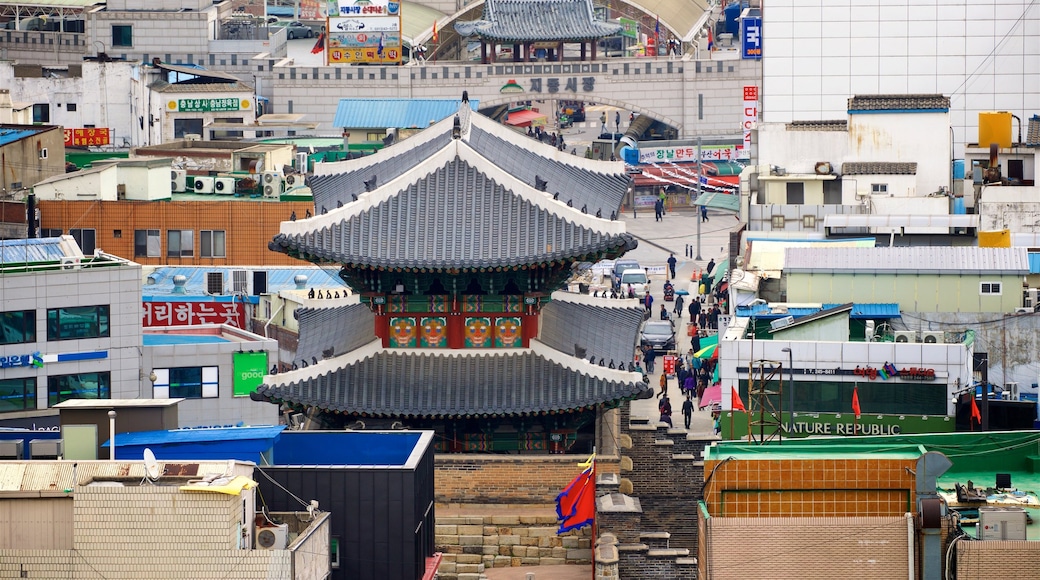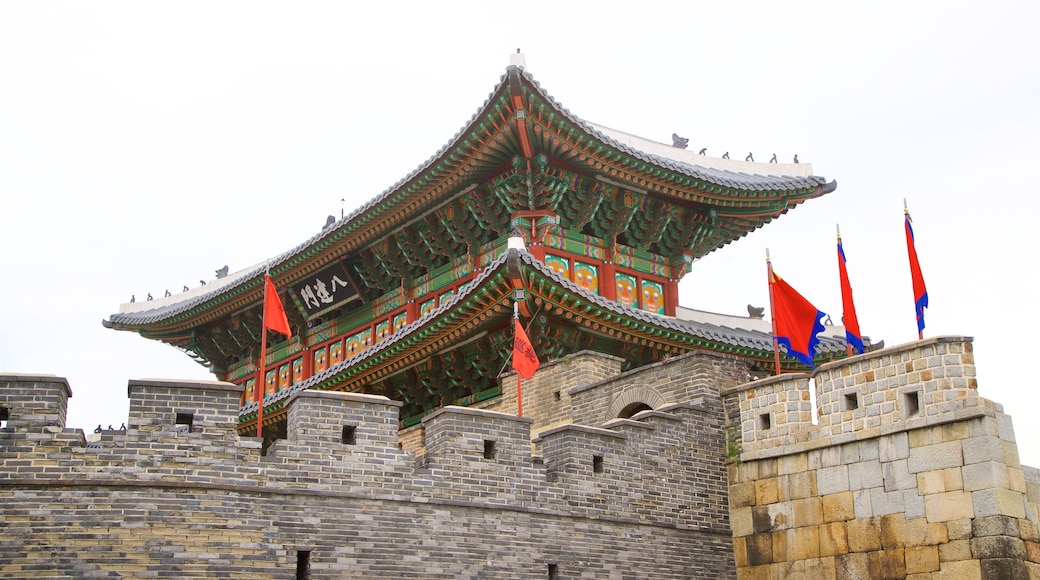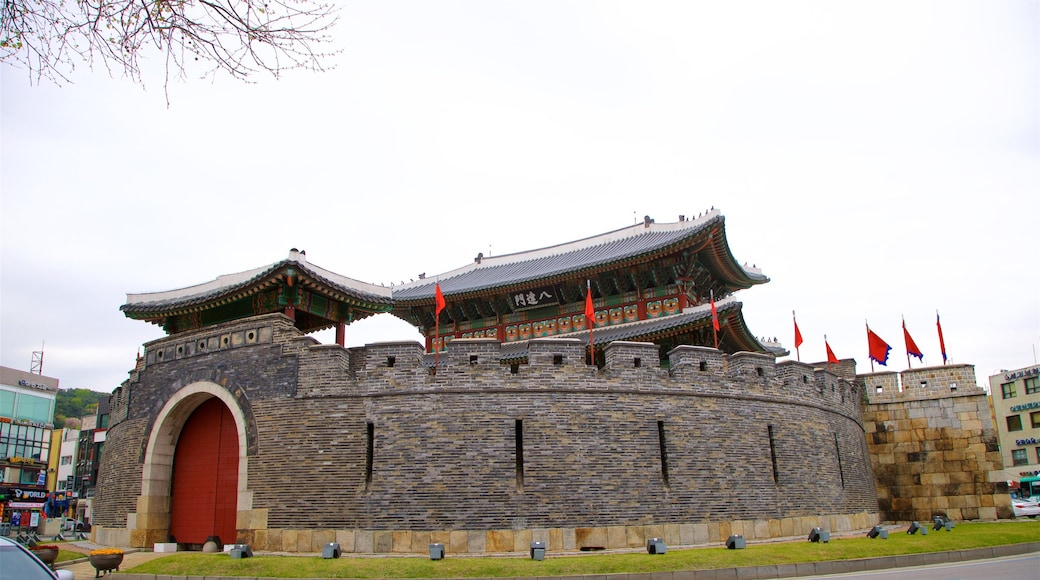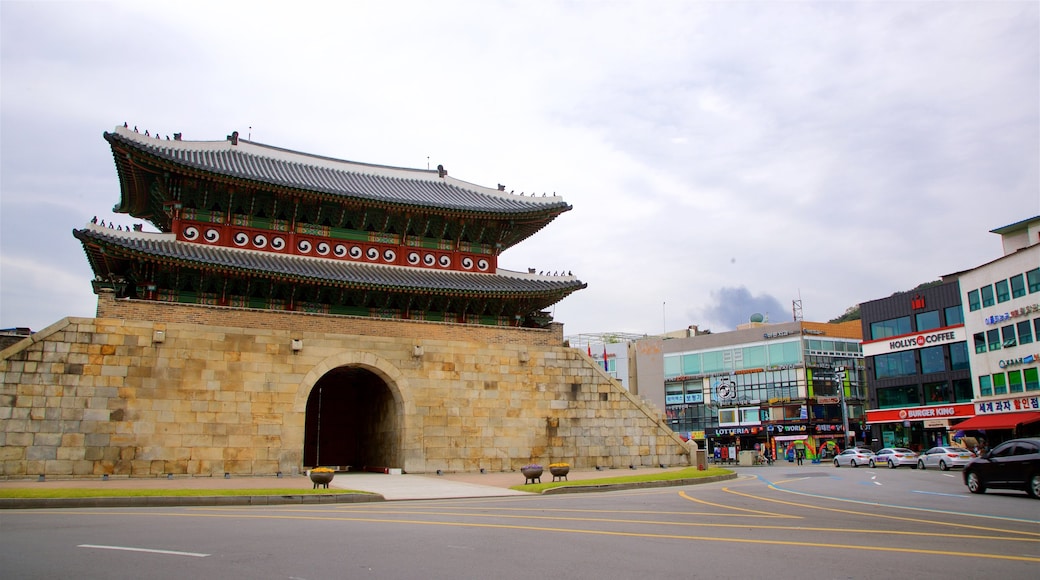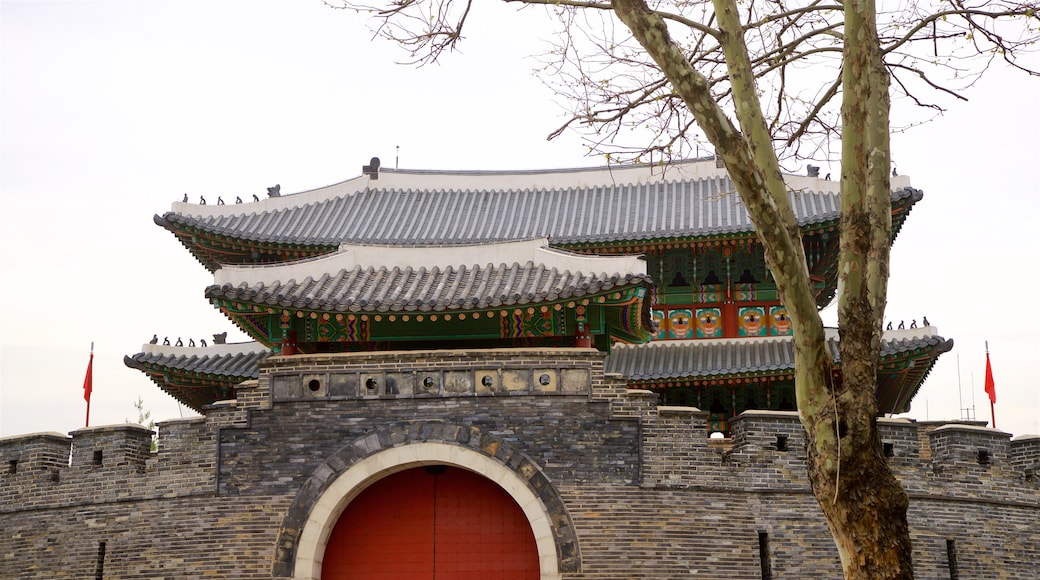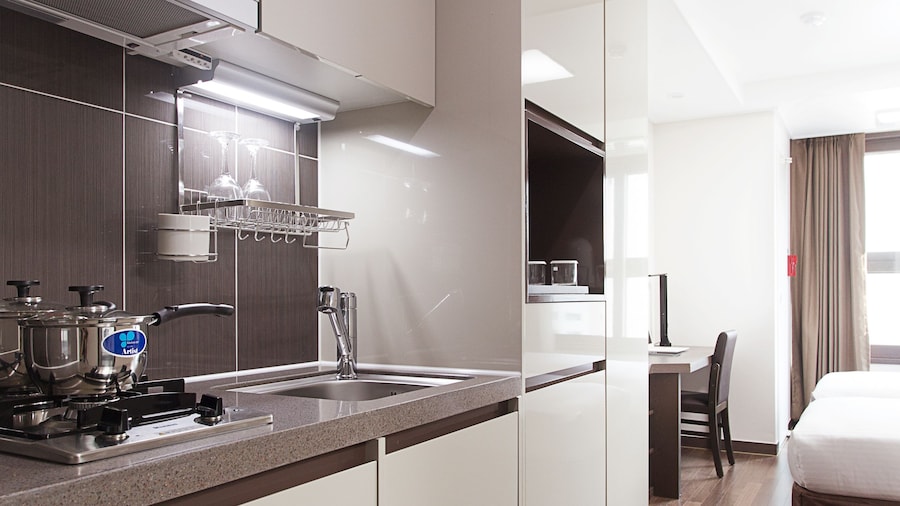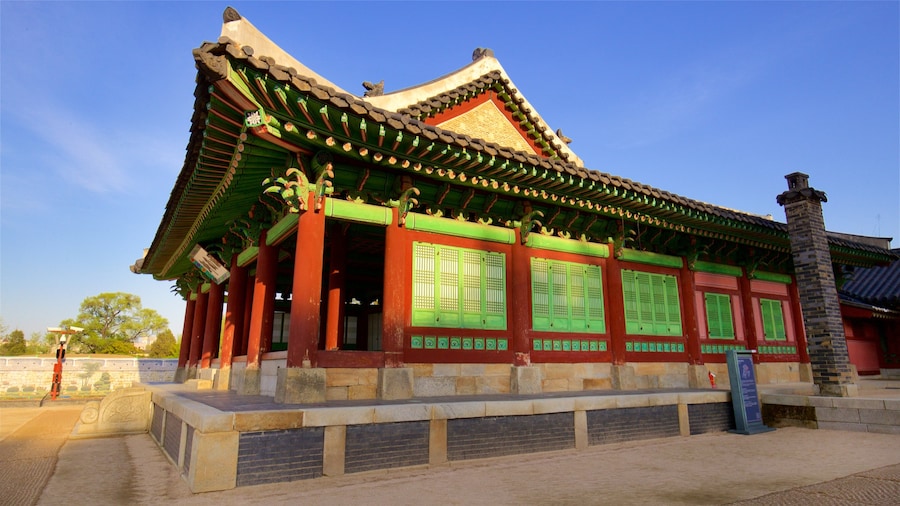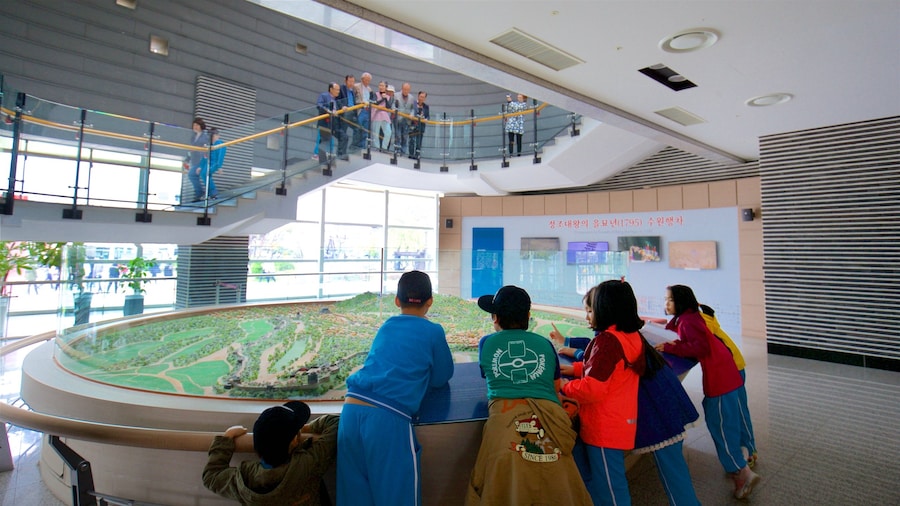This mighty southern gateway of Hwaseong Fortress now sits at the centre of the bustling city of Suwon as a reminder of the city’s Joseon Dynasty heritage.
The imposing Paldalmun Gate is the spectacular south entrance to the Hwaseong Fortress. Unlike the complex’s other cardinal gates, Paldalmun Gate is detached from the old city walls and stands alone in the heart of Suwon. Explore this relic from the late 18th century, which contrasts against the modern developments of the surrounding city.
Also known as Nammun, Paldalmun Gate is likely to be your first encounter with the old city walls of the Hwaseong Fortress if you are exploring the center of the city. The gateway stands like a portal into another time in the center of a busy road. Admire the crescent-shaped wall that protects one side of the structure. Known as an ongseong, this wall was used as a secondary barricade against enemy forces. Spot the narrow slits along the wall, which were used by Joseon-era archers for firing arrows.
The gateway was constructed with the rest of the fortress in 1794 as a means of protection for the royal city of Suwon. At the time, King Jeongjo wished to make a colossal shrine for his late father, Prince Sado. The gateway was named after the nearby mountaintop and decorated beautifully with traditional hip-and-gable roofing. Walk around the exterior of the imposing structure to admire its design, which combines military might with elegant decorations. It is large and elaborate, one of four cardinal gateways in the Hwaseong Fortress, and has retained its grandeur throughout the centuries. Admire the pretty flags that wave from the top of the ramparts and see if you can spot the marble plaque that lists the gate’s 18th-century builders.
While the Paldalmun Gate site is not accessible, it is a magnificent sight to appreciate from across the street and a great reference point for walking tours around the city. You can see the gate any time for free or pay the admission fee to enter the rest of the Hwaseong Fortress complex. You’ll find a range of shops, food stores and markets in the adjacent streets of Suwon’s city center.
